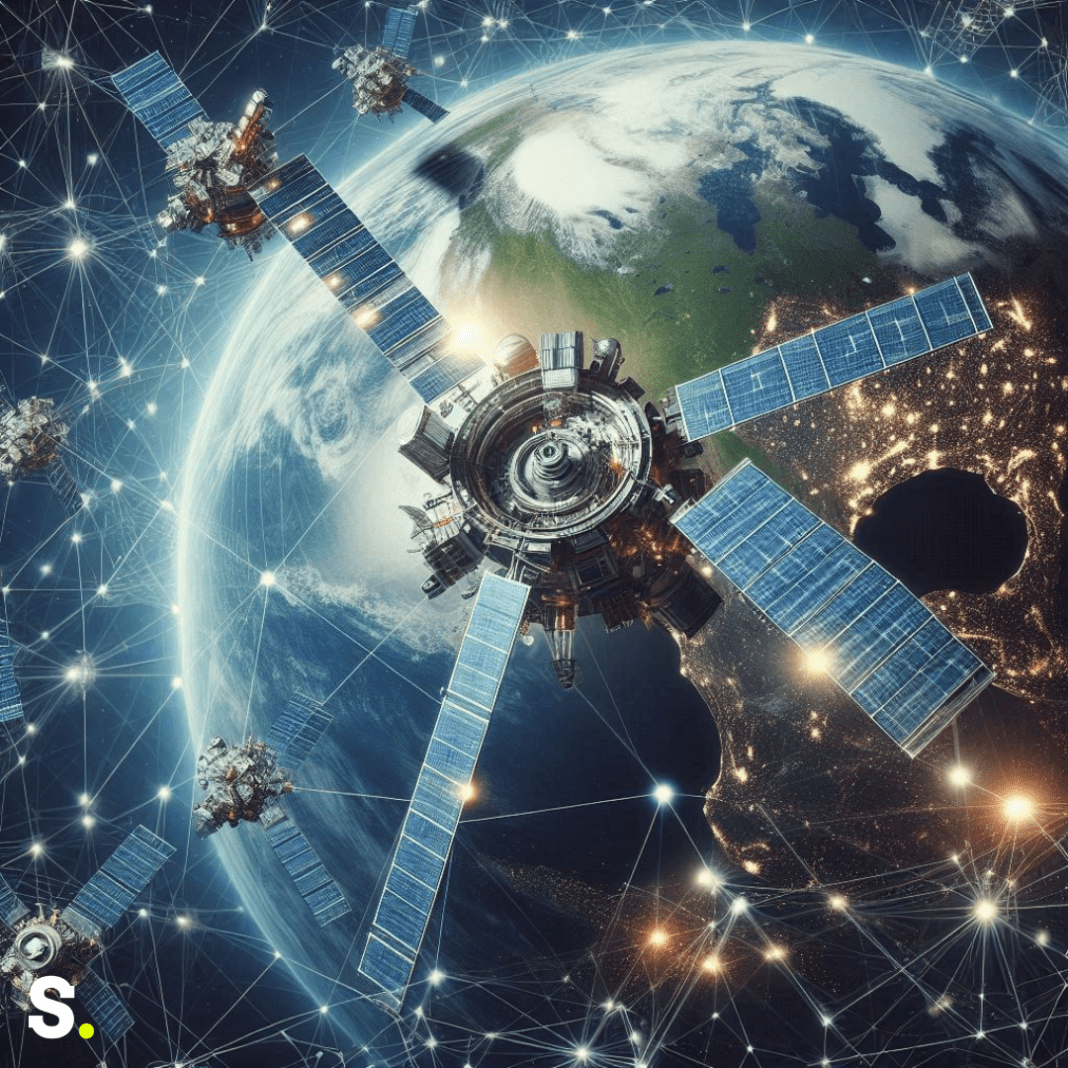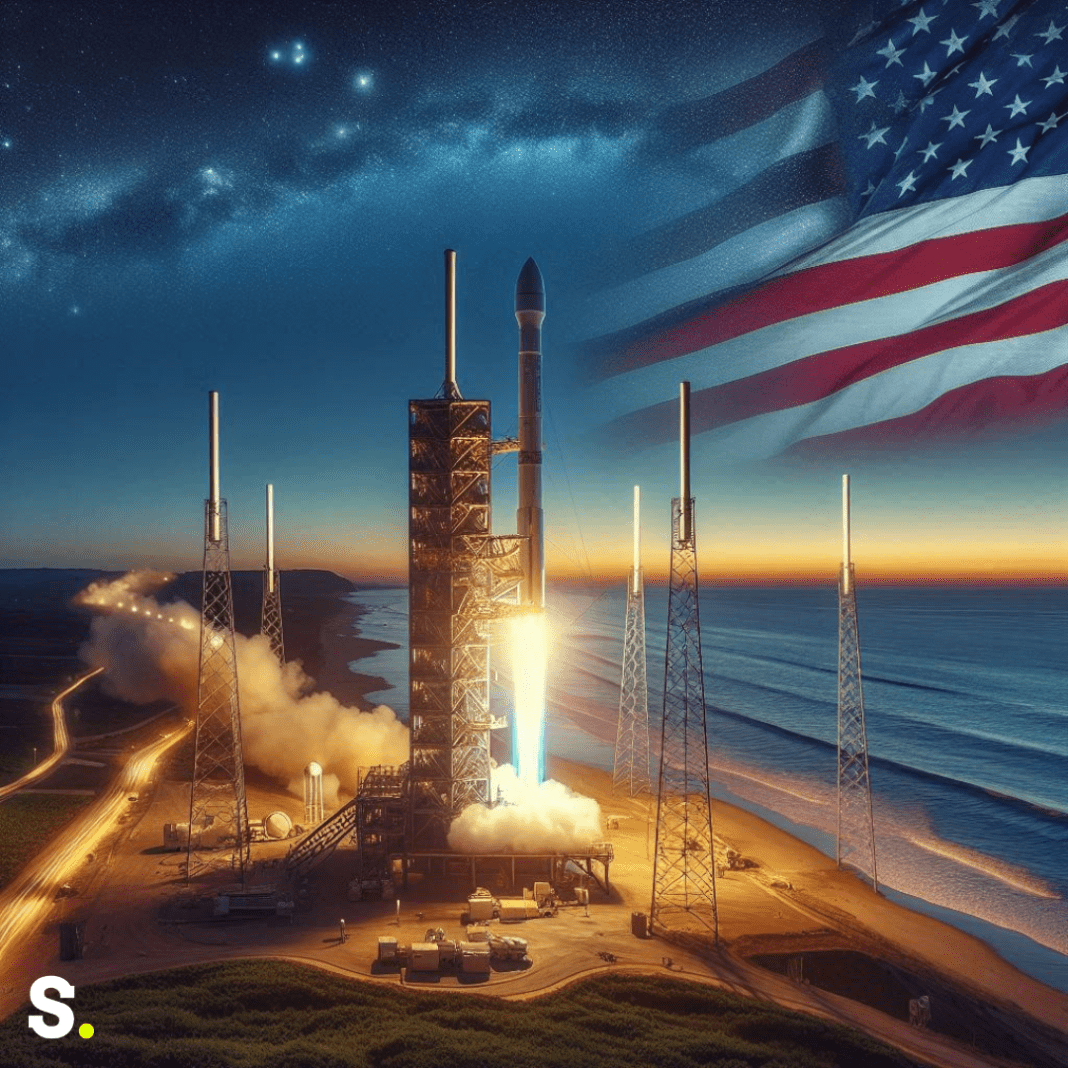Space communication refers to the exchange of data between Earth and objects in space or between two points in space. It is a critical component of modern space exploration, enabling scientists, engineers, and astronauts to monitor and control spacecraft, transmit scientific data, and maintain contact with mission control. From satellite communication to deep space exploration, space communication plays a vital role in a wide range of applications, including weather forecasting, navigation, and international coordination.
This system comprises two main components: the ground segment and the space segment. The ground segment typically includes ground stations on Earth, equipped with antennas and other technologies to transmit and receive signals. The space segment is made up of satellites and spacecraft that are in orbit around the Earth or are traversing space. These spacecraft can interact with ground stations and occasionally with other spacecraft.
The Core of Space Communication: Transmitters and Receivers
At its core, space communication involves two essential components: a transmitter and a receiver. The transmitter encodes messages onto electromagnetic waves through modulation, altering the wave’s properties to carry data. The receiver demodulates these waves after they have traveled across a great distance in order to interpret the original message. This process is similar to how Wi-Fi routers and networked devices communicate on Earth, but on a much larger and more intricate scale due to the enormous distances involved.
Space communication involves several key tasks: receiving commands from Earth (uplink), sending data to Earth (downlink), and sending or receiving information between spacecraft (crosslink). To handle these tasks, space communication systems use specific frequency bands of the electromagnetic spectrum. The two primary types of space communication systems are Free Space Optical (FSO) communication, also known as laser communication, and Radio Frequency (RF) communication. FSO uses light beams to transmit data, offering high data rates but being sensitive to atmospheric conditions like moisture and clouds. On the other hand, RF communication, which is more common and robust against atmospheric disturbances, generally provides lower data rates compared to laser communication.
Types of Space Communication Propagation
Space communication relies on three main types of propagation to transmit signals: ground wave, sky wave, and space wave propagation.
Ground Wave Propagation:
Ground wave propagation occurs when antennas are close to Earth’s surface, typically used for local broadcasting at low frequencies (~500 kHz to 1500 kHz). The size of the antenna and the radio wave’s frequency affect this method’s efficiency.
Sky Wave Propagation:
Sky wave propagation involves transmitting signals upward, where they are reflected back by the ionosphere, a layer of charged particles in the atmosphere. This method supports long-distance communication by bouncing signals between the ionosphere and Earth’s surface.
Space Wave Propagation:
Space wave propagation, also known as line-of-sight communication, requires transmitting signals directly between two points in space. This method often necessitates high-altitude antennas, such as those used by satellites. The distance that can be covered in a straight line depends on how high the sending and receiving antennas are above the surface of the Earth.
Ground Networks: The Backbone of Space Communication
Effective space communication requires more than simply pointing a spacecraft’s antenna at Earth. NASA operates an extensive network of antennas across all seven continents to ensure reliable data transmission. These ground stations are crucial for receiving signals from spacecraft as they pass overhead. For example, smaller antennas provide backup communication for the International Space Station (ISS), while massive 230-foot antennas communicate with distant missions like the Voyager spacecraft, which is over 11 billion miles away.
Ground networks are an integral part of the communication process, ensuring that signals from space are received and processed efficiently. These networks consist of numerous ground stations strategically located around the world, equipped with large antennas to capture the faint signals from distant spacecraft. Each ground station is responsible for tracking and communicating with specific spacecraft as they pass overhead.
One of NASA’s most well-known ground networks is the Deep Space Network (DSN), which consists of three large antenna complexes located in California, Spain, and Australia. Because the DSN continuously scans the sky, NASA is able to stay in touch with spacecraft even when the Earth spins. This network is critical for deep-space missions, enabling communication with spacecraft far beyond the orbit of Earth.
Space Relays: Enhancing Data Transmission
Many NASA missions use relay satellites to enhance data transmission. These relay satellites, such as the Tracking and Data Relay Satellites (TDRS), transmit data from spacecraft to ground stations in locations like New Mexico and Guam. For Mars missions, data is relayed through orbiters around Mars before reaching Earth. Relays offer significant advantages, including global coverage and near-continuous communication, as seen with TDRS’s three strategic placements around Earth. This setup ensures that data can be relayed 24/7 without waiting for spacecraft to pass over a ground station.
Relay satellites act as intermediaries between spacecraft and ground stations, providing a continuous communication link even when the spacecraft is out of direct line-of-sight with Earth. This capability is particularly valuable for missions in low Earth orbit (LEO), such as the ISS, where relay satellites enable constant communication with mission control.
For missions to Mars, NASA uses orbiters like the Mars Reconnaissance Orbiter (MRO) as relay stations. These orbiters receive data from rovers on the Martian surface and transmit it back to Earth. This approach not only extends the range of communication but also allows for higher data rates, as the distance between the rover and the orbiter is much shorter than the distance between Mars and Earth.
Bandwidth and Data Rates: The Lifeline of Space Communication
NASA employs various bands of electromagnetic frequencies to encode data. Higher bandwidths, or frequency ranges, allow for faster data transmission. Currently, NASA predominantly uses radio waves but is developing optical communication methods using infrared lasers. The Laser Communications Relay Demonstration (LCRD) aims to test and showcase the benefits of optical communication, offering higher data rates than traditional radio waves. This technology will be used on the space station to relay data back to Earth with enhanced efficiency.
In the past, missions like Apollo used radios that transmitted low-quality video. Today, with advancements in optical communication, upcoming missions like Artemis II will send 4K ultra-high-definition video from lunar orbit. However, data rates are influenced not just by bandwidth but also by factors such as distance, antenna size, and power availability. NASA engineers work to balance these elements to maximize data rates.
One of the key challenges in space communication is managing the limited bandwidth available for transmission. The demand for bandwidth rises with the number of missions launched, necessitating effective management of the available spectrum. NASA uses sophisticated techniques to allocate bandwidth based on mission priorities and data requirements, ensuring that critical information is transmitted without delay.
Latency and Interference: Navigating the Challenges of Space Communication
Space Communication is bound by the speed of light, which imposes a time delay, or latency. For spacecraft close to Earth, this delay is minimal, but it becomes significant with increasing distance. For instance, at Mars’ closest approach, the communication delay is about four minutes, and at its farthest, it extends to around 24 minutes. This means astronauts must wait up to 24 minutes for messages to travel to Earth and back, a challenge that NASA addresses by developing solutions for maintaining effective communication despite these delays.
Additionally, space communications can suffer from interference due to radiation from other celestial bodies or space missions. To ensure data integrity, NASA employs error detection and correction techniques. These include computer algorithms designed to interpret and correct noisy transmissions, ensuring that mission control receives accurate information.
One commonly used technique is forward error correction (FEC), where additional data, known as redundancy, is included in the transmitted message. If parts of the message become corrupted during transmission, the receiver can use the redundant data to reconstruct the original message accurately. This method is particularly effective for deep-space communication, where signals may weaken or become distorted over long distances.
Another technique is automatic repeat request (ARQ), where the receiver detects errors in the received message and requests a retransmission. While effective, ARQ can increase latency, as the message must be resent until it is received without errors. Therefore, NASA carefully balances the use of ARQ and FEC to optimize communication reliability without introducing excessive delays.
Interference from other spacecraft or ground-based sources can also pose a challenge. To mitigate this, NASA uses spectrum management to allocate specific frequency bands to different missions, reducing the likelihood of interference. Additionally, directional antennas are used to focus transmissions toward their intended target, minimizing the chances of interference from other sources.
The Sun is another significant source of interference, particularly during solar storms or periods of high solar activity. These events can generate powerful bursts of radiation that can disrupt communication signals. To counter this, NASA monitors solar activity and adjusts communication schedules to avoid transmitting during periods of high solar interference. Additionally, some spacecraft are equipped with shielding to protect their communication systems from solar radiation.
Advantages of Space Communication
Space communication offers several advantages. It provides global coverage, enabling communication from any location on Earth, which is especially useful for multinational organizations and international coordination. High-speed data transmission is another benefit, crucial for real-time applications like weather forecasting and remote sensing. Space communication systems are reliable, less affected by natural disasters compared to ground-based systems, and serve as a dependable backup for critical communication needs during emergencies. They also support a variety of applications, including scientific research, military operations, commercial ventures, and personal communications. For remote or difficult-to-reach areas, space communication can be more cost-effective than extensive ground-based infrastructure.
Challenges and Disadvantages of Space Communication
However, space communication also has disadvantages. The high cost of developing, launching, and maintaining space communication systems can be prohibitive for some organizations or countries. Latency, or the delay in signal transmission due to vast distances, can impact real-time applications, such as live video calls. Space communication infrastructure is vulnerable to collisions with space debris, which can disrupt services. The limited bandwidth available for space communication compared to ground-based systems can restrict the volume of data transmitted. Weather conditions, such as solar flares and atmospheric disturbances, can affect the performance of space communication systems. Lastly, security concerns arise as space communication signals can be intercepted, requiring advanced encryption and security measures to protect sensitive information.
Understanding space communication systems highlights the complexity and importance of maintaining connectivity over vast distances. These systems are crucial for various sectors, from space exploration to everyday communication, despite the challenges they face. While the movies may simplify the process, the reality involves sophisticated technology, extensive networks, and ongoing innovation to overcome the obstacles of space communication. As NASA continues to develop new technologies, such as optical communication, the future of space communication promises even greater capabilities, enabling humanity to explore deeper into the cosmos while staying connected to Earth.




